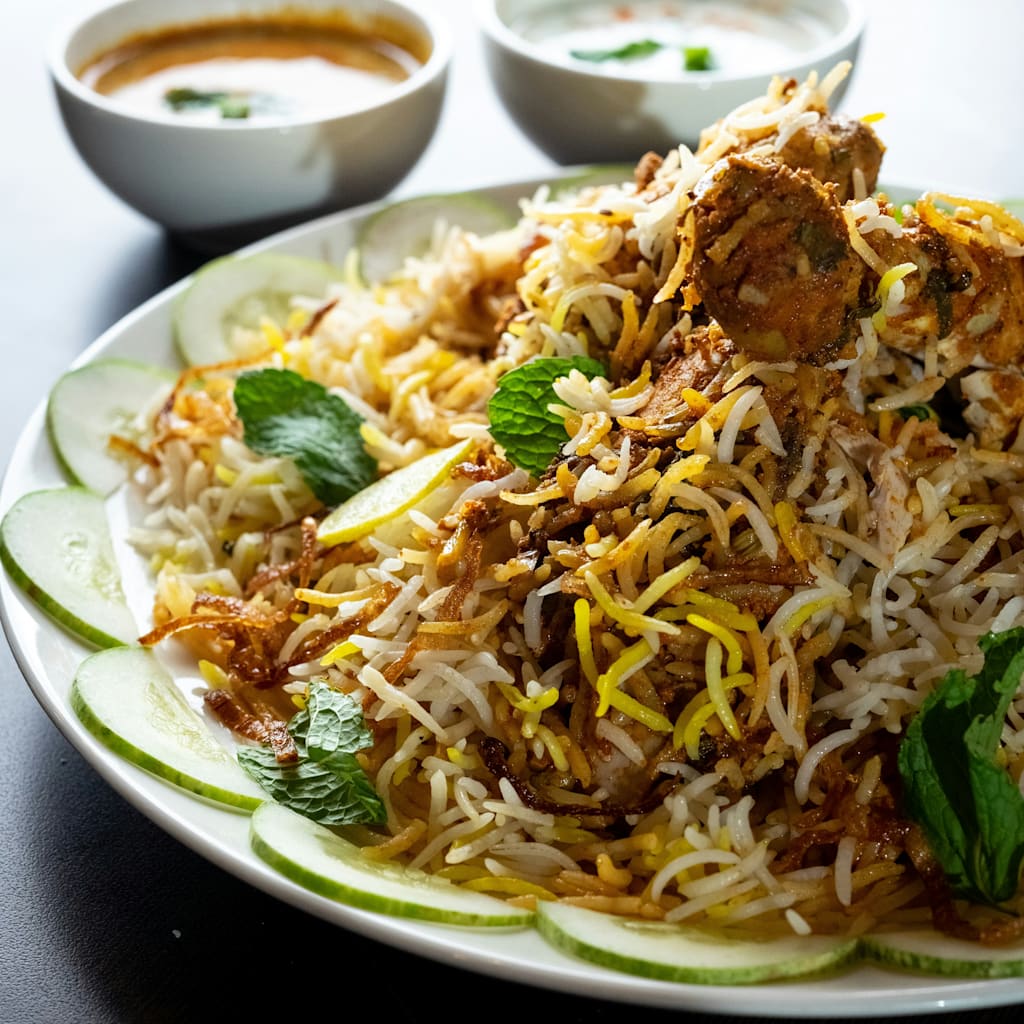Biryani
Biryani, a globally beloved dish known for its tantalizing aroma and rich flavors, carries with it a history as vibrant as its taste. Originating centuries ago, this iconic meal is a culinary symbol of cultural exchange, innovation, and tradition.
Origins of Biryani
The word "Biryani" is derived from the Persian words birinj (meaning rice) and biryan (to fry or roast). It is believed that the dish was introduced to the Indian subcontinent by Persian travelers and merchants. Some historians trace its origins to the Mughal era, when the Persian influence shaped the royal kitchens of India. The Mughal emperors, particularly Akbar and Aurangzeb, are said to have popularized Biryani, making it a staple in their feasts.
A Dish Born from Necessity
Legend has it that Biryani also has roots in practicality. During the Mughal reign, it was prepared as a wholesome, one-pot meal for soldiers on the battlefield. Layered with rice, meat, and spices, the dish provided nourishment and energy. The soldiers' version of Biryani, called Pulao, was adapted and enriched with local spices to become the flavorful Biryani we know today.
A Global Favorite
The journey of Biryani did not stop in India. As trade and migration expanded, so did its influence. From the Middle East to Southeast Asia, Biryani evolved further, blending with local cuisines and winning hearts worldwide. In contemporary times, it has become a staple on menus from street-side stalls to high-end restaurants.
A Timeless Celebration of Flavor
Biryani is more than just a dish—it is a celebration of culture, history, and flavor. Its preparation is an art form, requiring patience, skill, and an understanding of spices. Whether served at a royal feast or a humble family gathering, Biryani continues to bring people together, embodying the spirit of hospitality and warmth.
As we serve you this beloved delicacy, we honor its storied past while striving to deliver the authentic experience of this timeless treasure.
